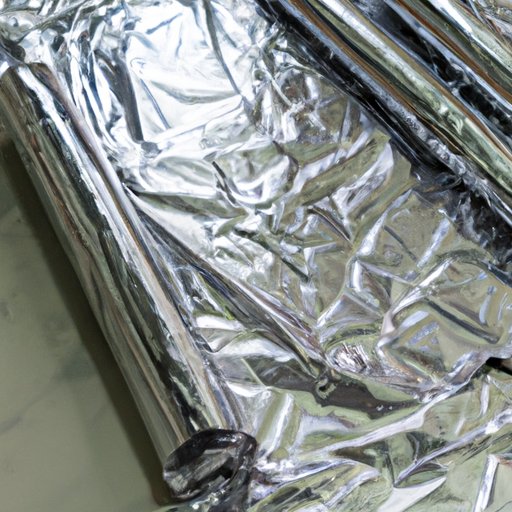Introduction
Aluminum foil is one of the most popular products in many households around the world. It is a thin sheet of aluminum metal that is often used for cooking and other household purposes. Aluminum foil has been around since the late 19th century when it was first produced by rolling aluminum sheets into thin strips. Since then, aluminum foil has become an essential product in many kitchens and homes.
Manufacturing Process of Aluminum Foil
The manufacturing process of aluminum foil involves several steps. First, raw materials such as aluminum ore, bauxite, and other minerals are mined and processed to obtain the pure form of aluminum. The aluminum is then melted down and passed through rollers to create thin sheets of aluminum. These sheets are then rolled even further to create a thin strip of aluminum, which is then cut into the desired size of aluminum foil. This process is repeated multiple times to ensure that the thickness and quality of the aluminum foil meets industry standards.
There are several benefits to using aluminum foil for cooking and other purposes. Aluminum foil can help keep food fresh for longer periods of time, as it prevents oxygen from entering and spoiling the food. Additionally, aluminum foil is non-toxic and does not leach chemicals into food, making it a safe and healthy choice for cooking. Finally, aluminum foil is also an excellent conductor of heat, making it perfect for baking and grilling.

Recycled Materials Used to Make Aluminum Foil
In recent years, more and more manufacturers have begun using recycled materials to make aluminum foil. Recycled aluminum can be collected from scrap metal or from aluminum cans. This aluminum is then melted down and re-processed to create new sheets of aluminum foil. The use of recycled materials helps reduce waste and conserve natural resources, making it an eco-friendly option for manufacturers.
Using recycled materials to make aluminum foil also has several other benefits. For example, it reduces the energy required to produce aluminum foil, as there is no need to mine and process new raw materials. Additionally, using recycled materials helps reduce the amount of pollution generated during the production process, as fewer emissions are released into the atmosphere.

Uses of Aluminum Foil Around the Home
Aluminum foil is a versatile product with many uses around the home. In the kitchen, it can be used to wrap food to keep it fresh, to line baking sheets for easy cleanup, and to cover containers to prevent splatters. Additionally, aluminum foil can be used for various craft projects, such as creating shapes and decorations, as well as for wrapping gifts. Outside the kitchen, aluminum foil can be used to protect furniture, to insulate windows, and to reflect light.

Environmental Impact of Aluminum Foil Production and Disposal
The production and disposal of aluminum foil can have a significant impact on the environment. During the production process, pollutants such as sulfur dioxide and nitrogen oxide are released into the atmosphere, leading to air pollution. Additionally, large amounts of water are used in the production process, which can lead to water shortages in some areas. When aluminum foil is disposed of improperly, it can contaminate soil and water, leading to further environmental damage.
Proper disposal of aluminum foil is important to minimize its environmental impact. Aluminum foil should be recycled whenever possible, as this will help conserve natural resources and reduce the amount of waste sent to landfills. If aluminum foil cannot be recycled, it should be disposed of properly, either in designated recycling bins or in the trash.
Conclusion
Aluminum foil is a widely used product in many households around the world. It is made from raw materials such as aluminum ore and bauxite, which are melted down and passed through rollers to create thin sheets of aluminum. Manufacturers may also use recycled materials to make aluminum foil, which helps reduce waste and conserve natural resources. Aluminum foil has many uses around the home, from keeping food fresh to protecting furniture and insulation windows. However, improper disposal of aluminum foil can have a negative impact on the environment, so it is important to recycle it whenever possible.

